ECMWF
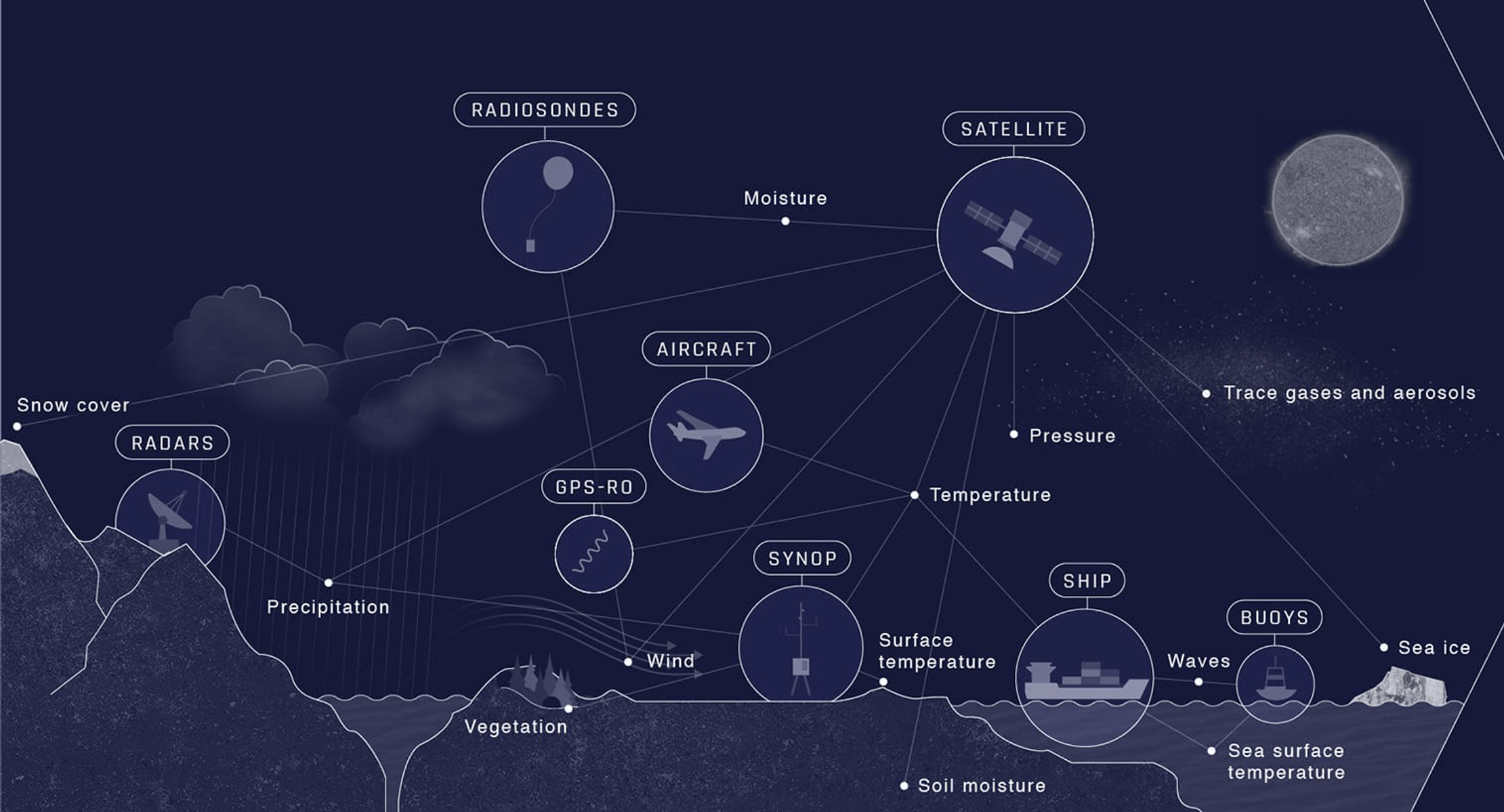
ECMWF asked us to create four explainers, visualizing how its unique forecasting system works. And how the weather isn’t the only thing it helps us predict.
We chose an illustration style that comfortably captured a snapshot of the natural world, one brimming with the weather signals that ECMWF absorbs: from precipitation and evaporation to solar radiation and soil moisture.
We built the story to work as static images, but subtle animated touches such as sea ice gently rocking on the waves helped to highlight the environmental forces at work.
Simple visual examples illustrated how this virtual Earth reveals the interconnectedness of our real one. Cold and warm air over the Carribean creates a tornado. A hurricane over the Atlantic ocean impacts the weather in Europe a few days later.
This suite of visualizations was launched at the AGU centennial conference in San Francisco, the largest international Earth and space science meeting in the world.
On the big screen and social media, they helped leading scientists and members of the public gain a new appreciation and understanding of ECMWF’s innovative, world-changing work.
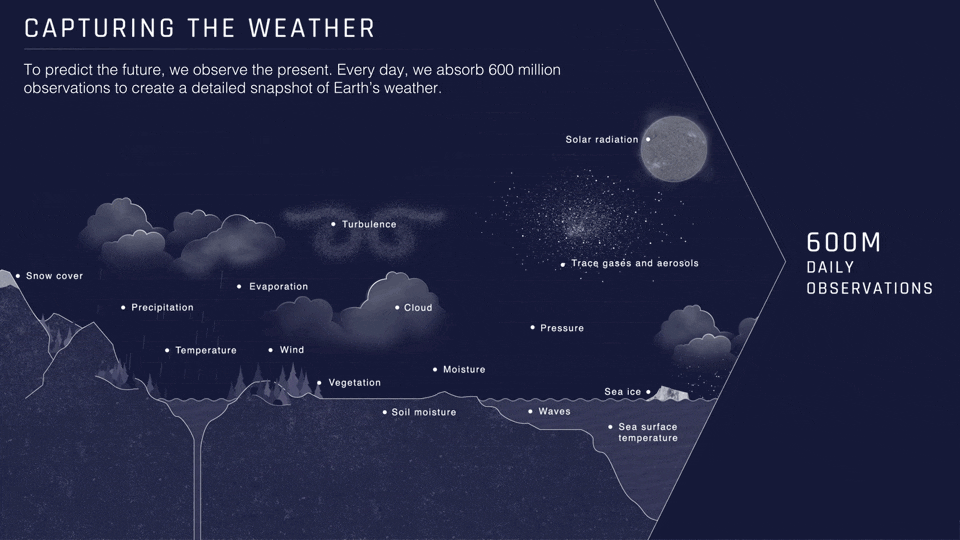
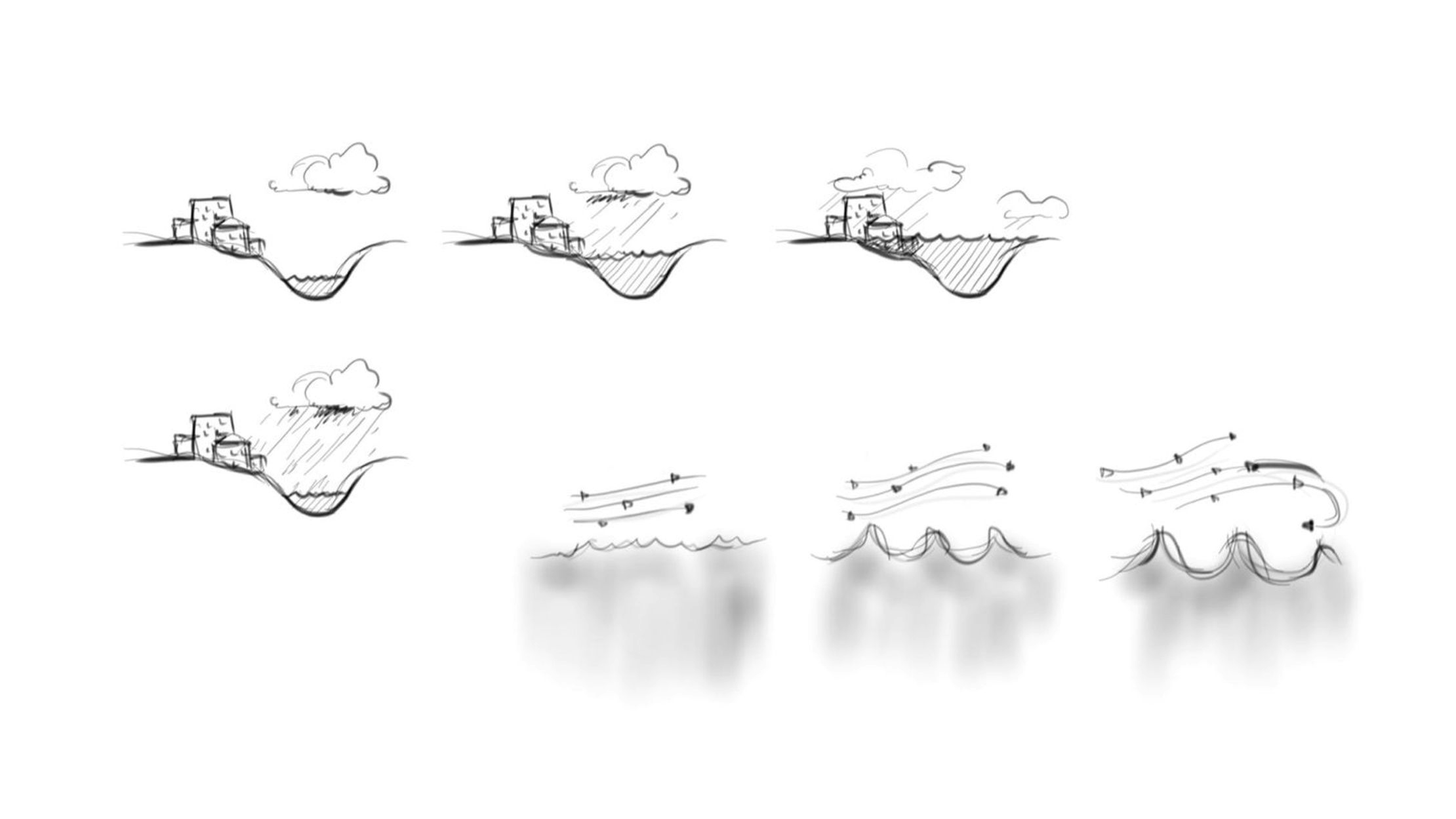
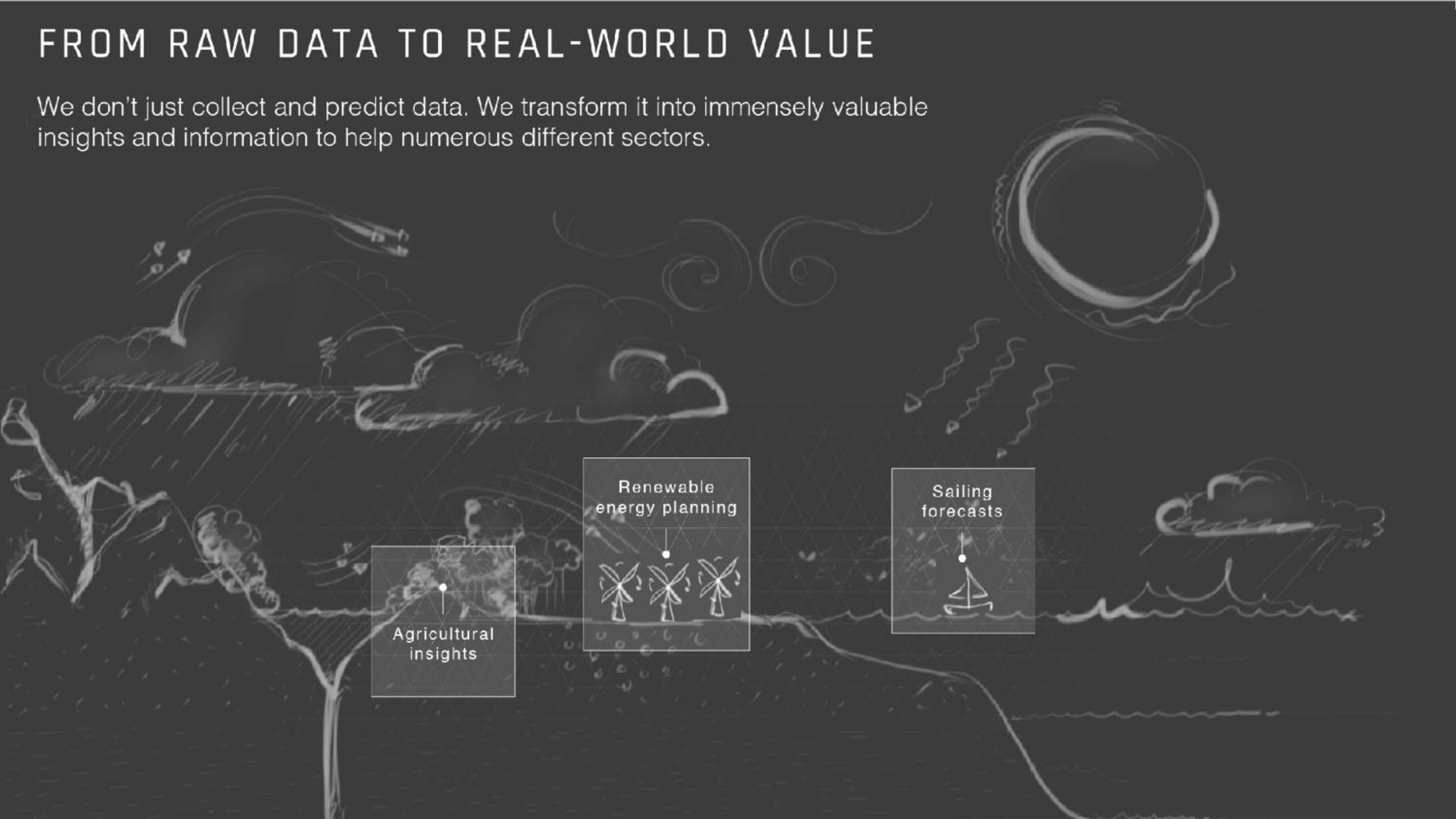
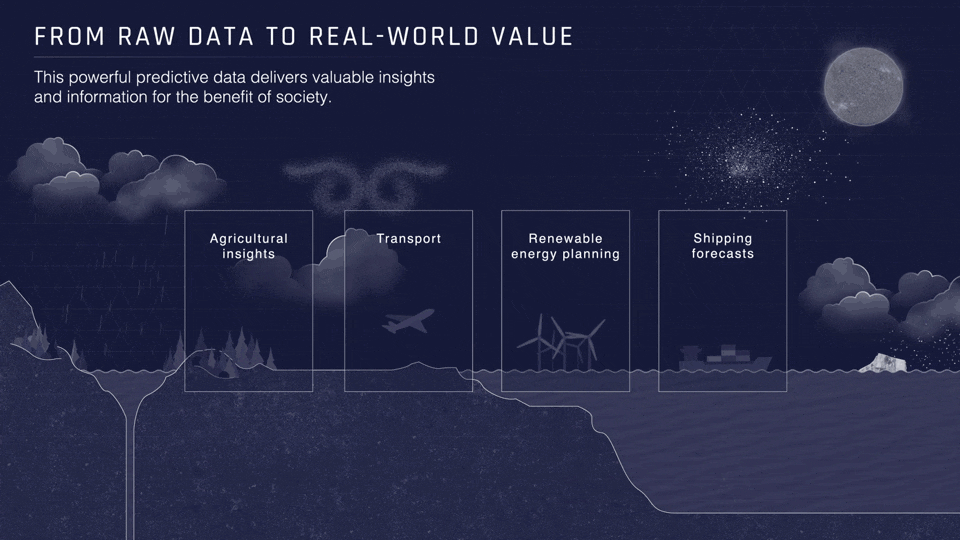
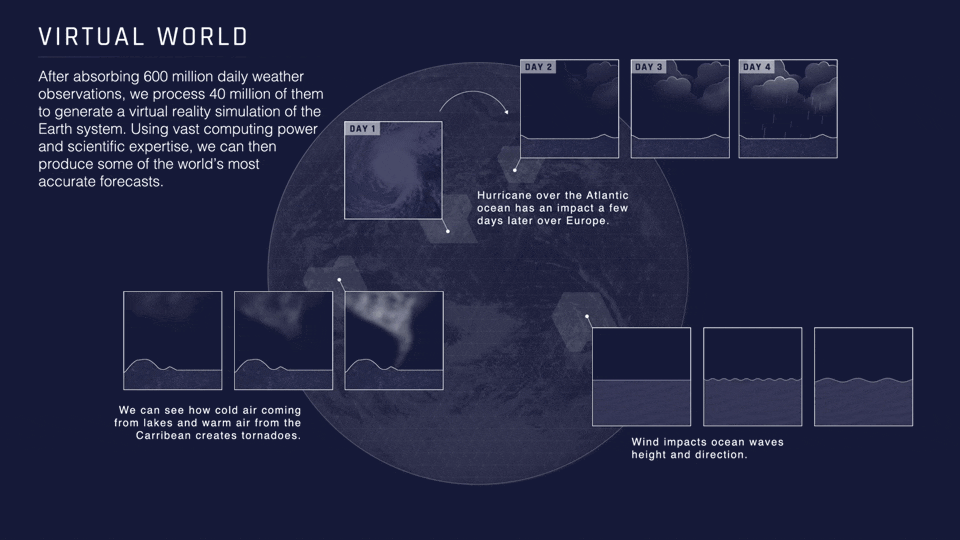
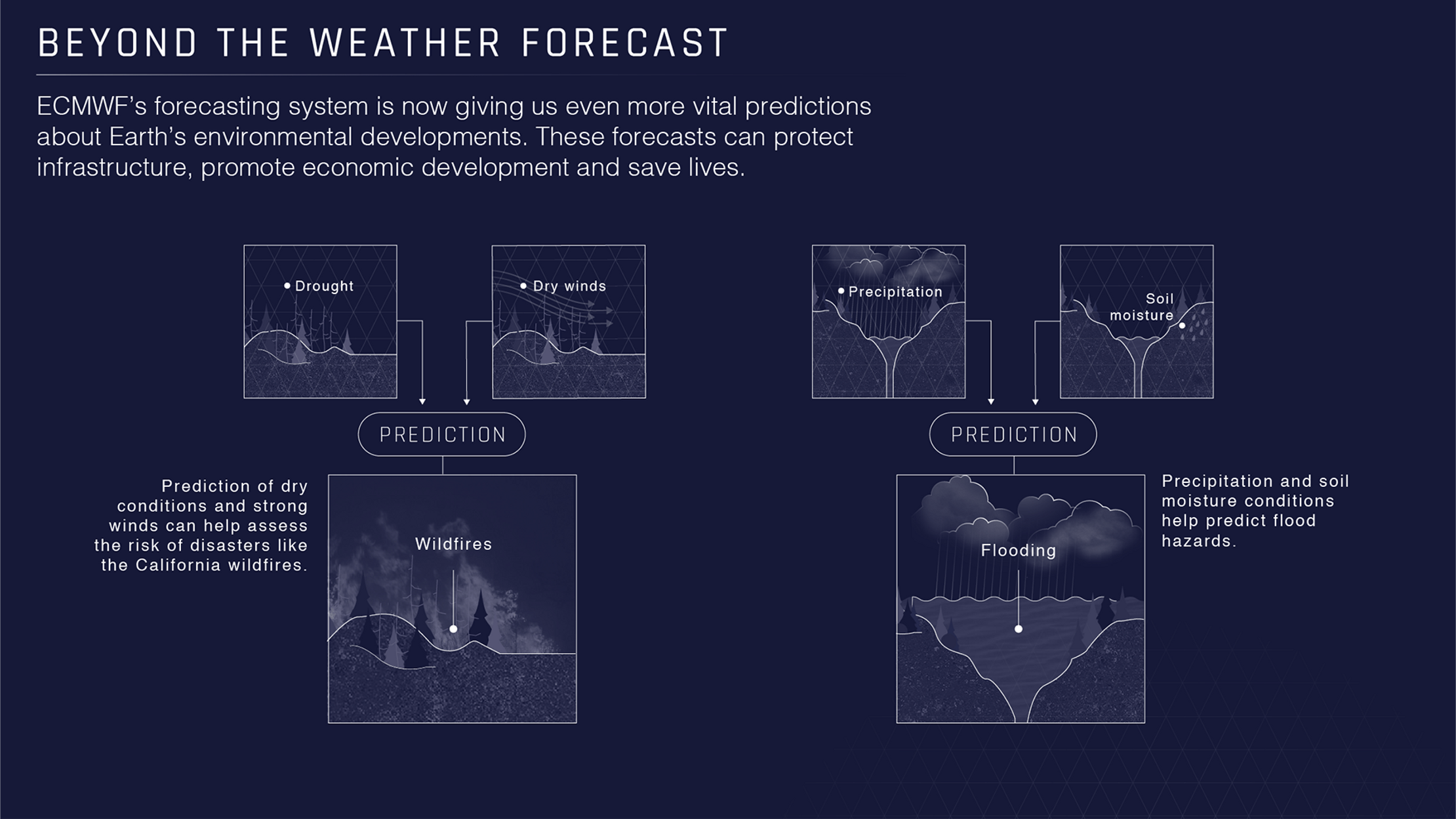
Get in touch:hello@beyondwordsstudio.com
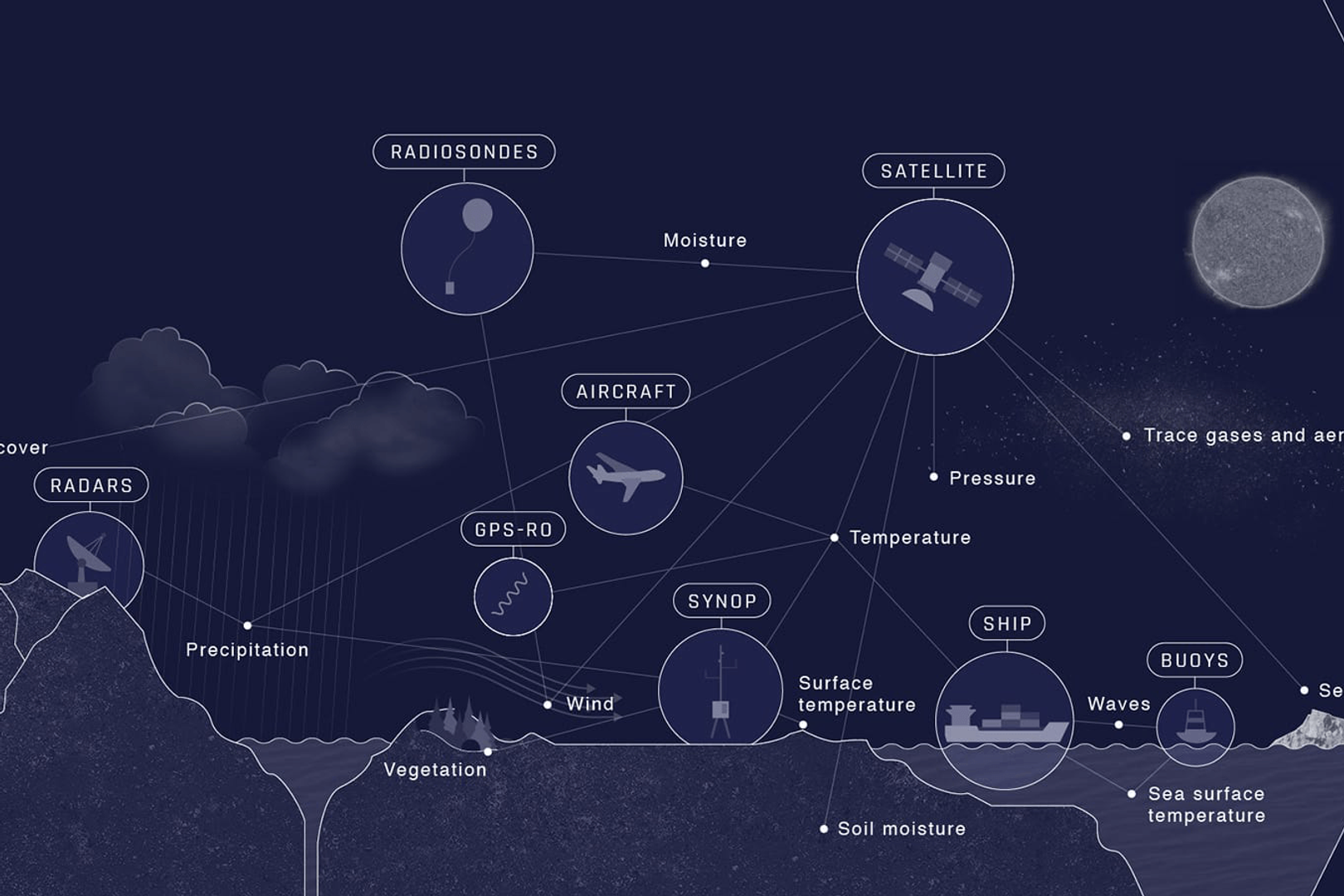
These simple, beautiful explainers reveal the predictive power of the world’s most accurate weather forecasting system.
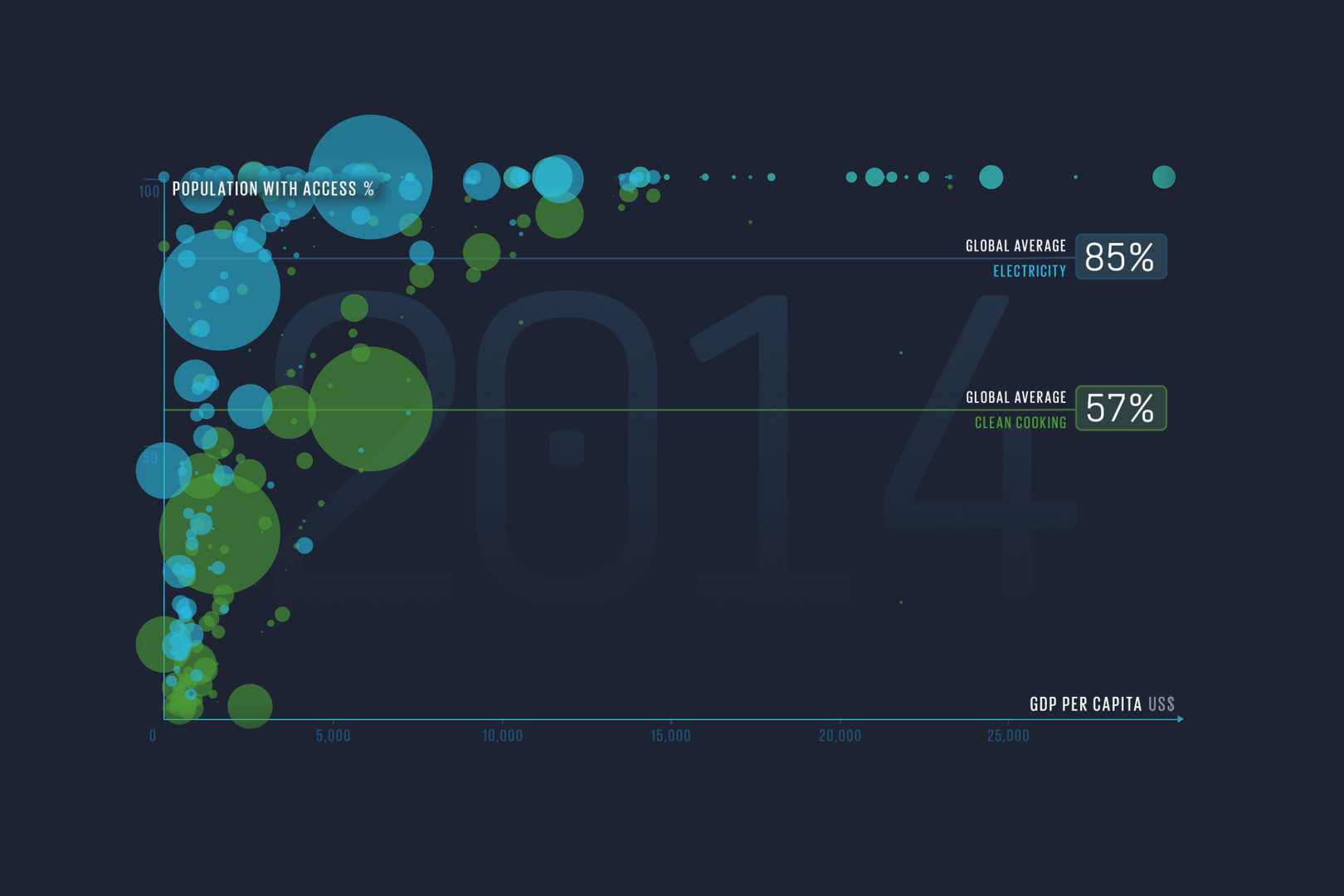
The story of the world’s move towards sustainable energy, illuminated through a series of animated data visualizations.
